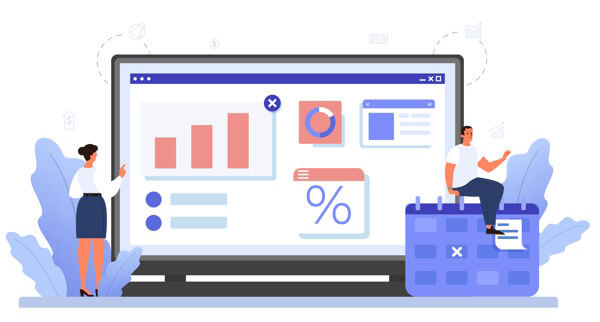Increase Traffic
Getting your site more visitors is one of the obvious, yet most difficult, ways to increase sales. One of the most powerful benefits of a modern e-commerce site is its ability to improve search engine visibility and optimization. Outdated websites often lack the necessary elements to rank high in search engine results pages (SERPs), which can severely limit organic traffic. By migrating to a modern e-commerce platform, you gain access to advanced SEO features and functionalities.
A modern e-commerce site offers seamless integration with social media platforms and powerful marketing tools, allowing you to tap into the immense potential of social commerce. Social media channels have evolved into influential marketing platforms, enabling businesses to reach a broader audience and drive targeted traffic.
Modern e-commerce platforms provide social media integration features, enabling users to share products, promotions, and content directly from your website to their social networks. By incorporating social sharing buttons and integrating with popular social media platforms, you empower your visitors to become brand advocates, amplifying your reach and attracting new visitors to your website.
Furthermore, modern e-commerce platforms often offer built-in marketing tools such as email marketing automation, customer segmentation, and personalized campaigns. These tools enable you to engage with your audience, nurture leads, and drive repeat traffic through targeted and personalized marketing efforts.
CRO
In the dynamic world of e-commerce, businesses are constantly seeking ways to maximize conversions and drive revenue. The advent of modern e-commerce websites has revolutionized the landscape, offering a host of advantages for Conversion Rate Optimization (CRO) compared to older, outdated platforms. In this article, we will explore three key advantages that modern e-commerce websites provide for CRO, empowering businesses to optimize their conversion rates and achieve sustainable growth.
Modern e-commerce websites are equipped with sophisticated analytics tools that provide invaluable data and insights to drive CRO efforts. These platforms offer robust tracking capabilities, allowing businesses to monitor user behavior, identify conversion bottlenecks, and optimize the customer journey.
With the ability to track key metrics such as bounce rates, click-through rates, cart abandonment rates, and conversion funnels, businesses gain a comprehensive understanding of their customers’ preferences, pain points, and engagement patterns. Armed with this data, they can make informed decisions to optimize website elements, streamline the purchase process, and implement targeted improvements to increase conversion rates.
Modern e-commerce platforms provide built-in A/B testing capabilities or integrate seamlessly with third-party tools, enabling businesses to conduct experiments and optimize their conversion rates systematically. By testing and iterating on different elements, businesses can continuously improve the effectiveness of their website, refine their CRO strategies, and achieve higher conversion rates over time.
Site Speed
Slow sites are a pain to use. If a page takes 4 or more seconds to load 25% of people will just leave. 46% of people will not return to a poor performing site which means a slow loading site can cost you half the users who are in the research phase of a purchase.
Modern e-commerce websites offer significant advantages in terms of site speed compared to their older counterparts. Site speed plays a crucial role in user experience, search engine rankings, and overall conversion rates. With technological advancements and optimized coding practices, modern e-commerce platforms prioritize site speed to deliver lightning-fast loading times.
Firstly, modern e-commerce websites leverage advanced caching techniques and content delivery networks (CDNs) to ensure quick and efficient content delivery. By caching frequently accessed elements and distributing content across multiple servers worldwide, CDNs reduce the distance between the user and the server, resulting in faster page loading speeds.
Secondly, modern e-commerce platforms employ techniques such as lazy loading and asynchronous loading to optimize site speed. Lazy loading allows images, videos, and other media elements to load only when they become visible to the user, reducing initial load times. Asynchronous loading enables the simultaneous loading of multiple website components, eliminating bottlenecks and enhancing the overall user experience. These optimizations not only improve site speed but also keep users engaged, increasing the likelihood of conversions and customer satisfaction.


Frequently Asked Questions




